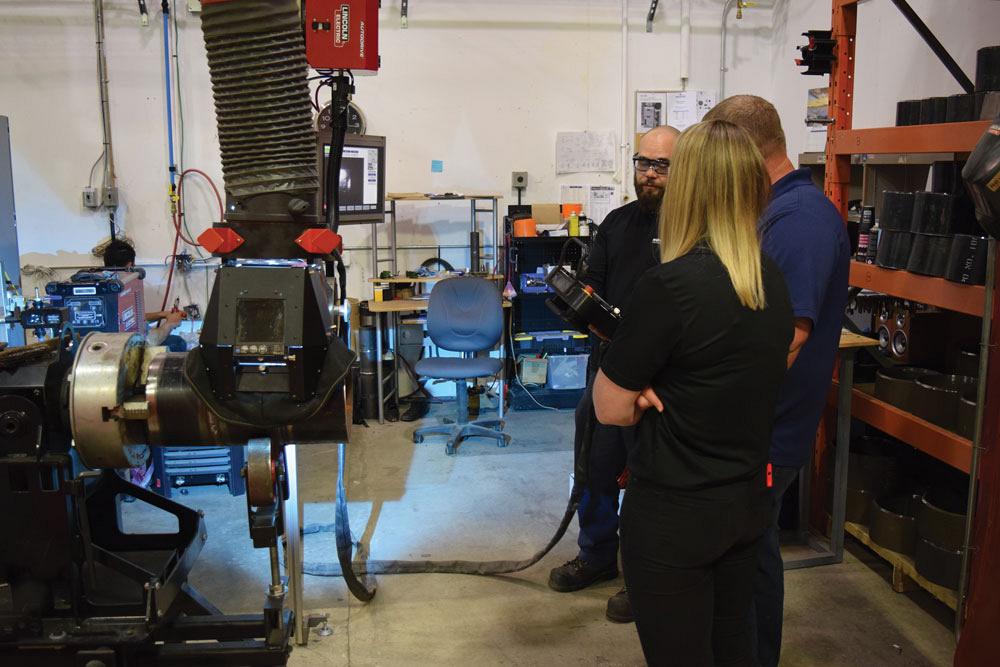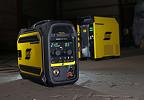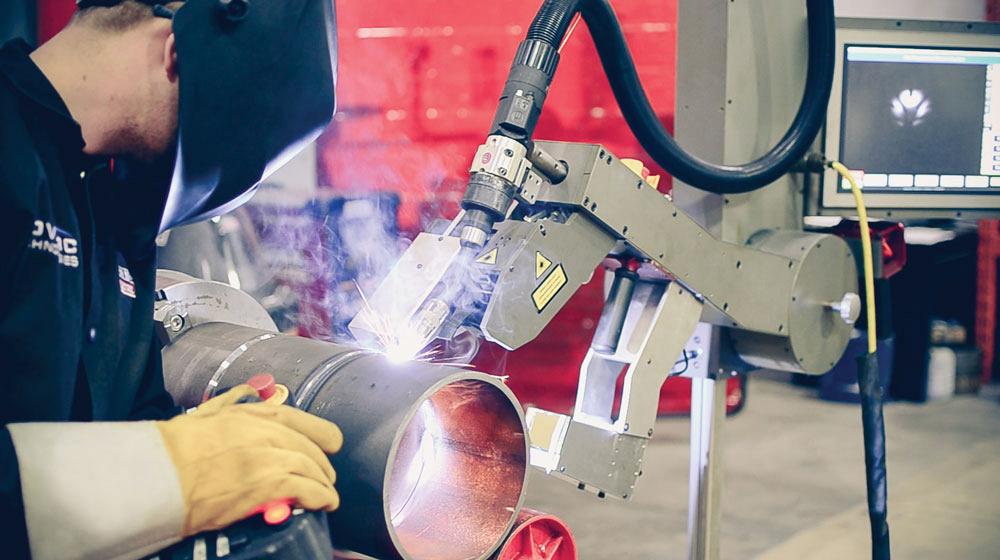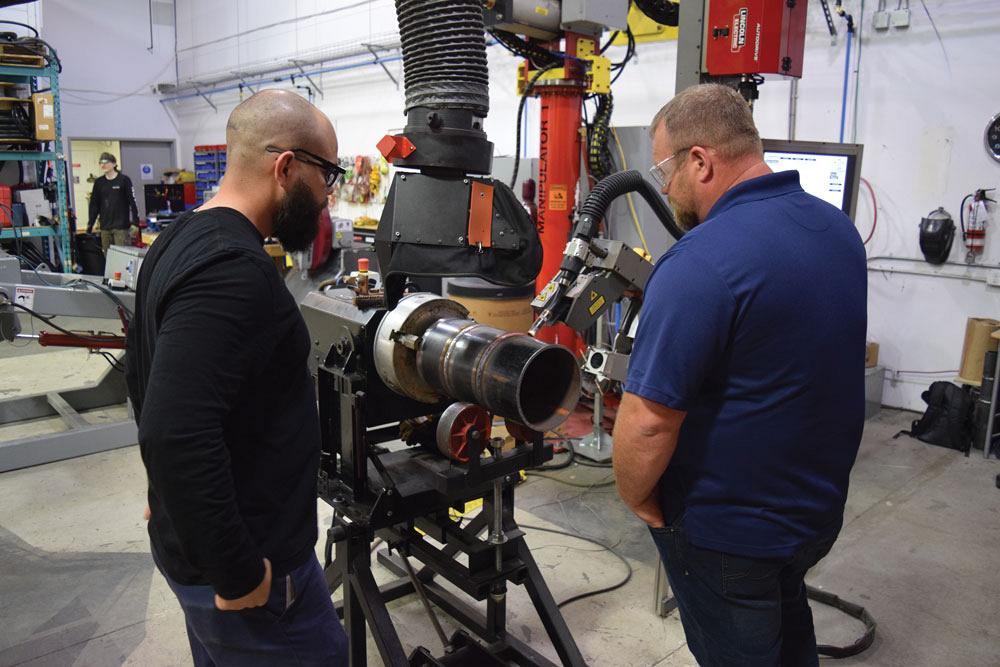Editor
- FMA
- The Fabricator
- FABTECH
- Canadian Metalworking
Flexible welding automation in action
Cobot tech allows welders to do what they do best; automation does the rest
- By Rob Colman
- August 2, 2019
- Article
- Automation and Software
Earlier this summer Vancouver-based Novarc Technologies hosted its first open house at its headquarters to complement open houses it recently hosted at distributor facilities across the U.S. The enthusiastic response of attendees suggests that the benefits of collaborative robot (cobot) applications will prompt further market penetration of these systems in a variety of configurations.
Pipe Welding in Comfort
Novarc first appeared in the market with its collaborative Spool Welding Robot (SWR) two years ago. The semi-automatic robotic setup is designed for pipe welding, small pressure vessel manufacturing, and other roll welding applications.
The device uses a 3-axis robotic arm at the end of a long-reach manipulator, which is designed to increase the dexterity and flexibility of human operators. It allows them to complete a full-penetration root to cap pipe weld.
In action, it clearly makes life easier for the pipe welder who is used to setting down a weld manually. The operator moves the robot to the joint and, after entering the parameters on a touchscreen, can start welding quickly; no robotic programming skills are needed.
A camera is set up to watch the deposition process, so the operator can react to this in real time, modifying weld parameters as he goes. It means the operator is exposed to less weld fumes and doesn’t experience the fatigue of being hunched over the weld. Welds are also easily repeatable because the system saves previously used welding procedures.
The SWR allows operators to choose between single pass or pre-programmed multipass welds. The water-cooled torch uses a 500-amp power supply.
The way the system is set up on an overhead boom arm allows a welder to move from joint to joint within a 15-foot radius of the base, while working with multiple positioners; no fence is required, allowing the system to be lifted out of the way of other shop traffic when not in use.
The SWR can store and recount weld data for shop analysis and statistical reporting as well.
Weld Know-how, Automation Support

Attendees of Novarc’s open house at its North Vancouver headquarters watch the technology in operation using the company’s new ArcHood product.
Chris Thurow, quality and welding technology manager, Samuel Pressure Vessel Group, attended one of the company’s recent open houses and saw how the automation made sense for the work his company does.
“We are always looking into ways in which we can use automation more in our business,” he said. “At all three of our locations, the challenge is staffing; if we could get more qualified welders in the door, we would. Even when we find skilled welders, it can take them a while to be trained up to do the specific work that we do.”
What Thurow said he appreciates about this technology is that it takes the repetitive details out of the job.
“The operator doesn’t have to worry about the weave action, keeping the weld in line with the seam. Instead, he can focus on the non-standard issues involved in this type of job, such as when the root gap becomes wider,” he explained. “You still need a qualified welder, but it’s a bit easier to control because the camera gets a better angle on the weld than a manual welder could, and you can adjust for the fitup as you go.
“It opens up opportunities for guys who really understand the process but can’t necessarily put it all together when welding manually because there is so much to react to. Really, there is so much happening during this type of welding, your reactions have to be almost instinctual. Seeing what the arc is doing, seeing the effect of changing the weave, adjusting the amps and volts – it makes it a cross between an art and a scientific process to keep track of that all at once.”
Thurow is enthusiastic about how cobots in general are changing the way we look at automation.
“If you’ve got a process that lends itself to consistent setup and placement of parts, hard automation is a great approach to a job,” he said. “There’s no real intelligence baked into a process like that; you just set your settings and track it as it goes, but it’s designed for things to go as planned every time. But in our shop, we’re almost never taking two squares of metal and welding them together. Rolled shells or formed heads are the majority of what we’re working with. With hard automation you typically want something backing the weld, not an open root, not full-penetration joints. With the use of cobots like this system, you get the benefits of both automation and the know-how of an experienced welder. The technology does what the technology does best, and the welder does the rest. The cobot just needs to know the configuration of the bevel, the thickness of the material, and the root gaps.”
Helmet-free Operation
At the Vancouver open house, Novarc also demonstrated its new ArcHood™ product, which is attached to a fume extraction arm and is then moved into place to surround the welding torch. Using this eliminates the need for welding helmets while working with mechanized welding equipment. The arc can still be viewed through an autodarkening window on the front of the ArcHood, but its placement minimizes exposure to welding sparks, fumes, excessive heat, and UV light. The picture here shows a guest observing a weld demonstration using the hood.
The peripheral benefits of such a tool are also self-evident. The use of such a hood eliminates the need for welding screens, freeing up shop space around the welding setup.
Editor Robert Colman can be reached at rcolman@canadianfabweld.com.
Novarc Technologies Inc., novarctech.com
About the Author

Rob Colman
1154 Warden Avenue
Toronto, M1R 0A1 Canada
905-235-0471
Robert Colman has worked as a writer and editor for more than 25 years, covering the needs of a variety of trades. He has been dedicated to the metalworking industry for the past 13 years, serving as editor for Metalworking Production & Purchasing (MP&P) and, since January 2016, the editor of Canadian Fabricating & Welding. He graduated with a B.A. degree from McGill University and a Master’s degree from UBC.
subscribe now


Keep up to date with the latest news, events, and technology for all things metal from our pair of monthly magazines written specifically for Canadian manufacturers!
Start Your Free Subscription- Trending Articles
CWB Group launches full-cycle assessment and training program

Achieving success with mechanized plasma cutting

3D laser tube cutting system available in 3, 4, or 5 kW

Brushless copper tubing cutter adjusts to ODs up to 2-1/8 in.

Welding system features four advanced MIG/MAG WeldModes

- Industry Events
MME Winnipeg
- April 30, 2024
- Winnipeg, ON Canada
CTMA Economic Uncertainty: Helping You Navigate Windsor Seminar
- April 30, 2024
- Windsor, ON Canada
CTMA Economic Uncertainty: Helping You Navigate Kitchener Seminar
- May 2, 2024
- Kitchener, ON Canada
Automate 2024
- May 6 - 9, 2024
- Chicago, IL
ANCA Open House
- May 7 - 8, 2024
- Wixom, MI

















